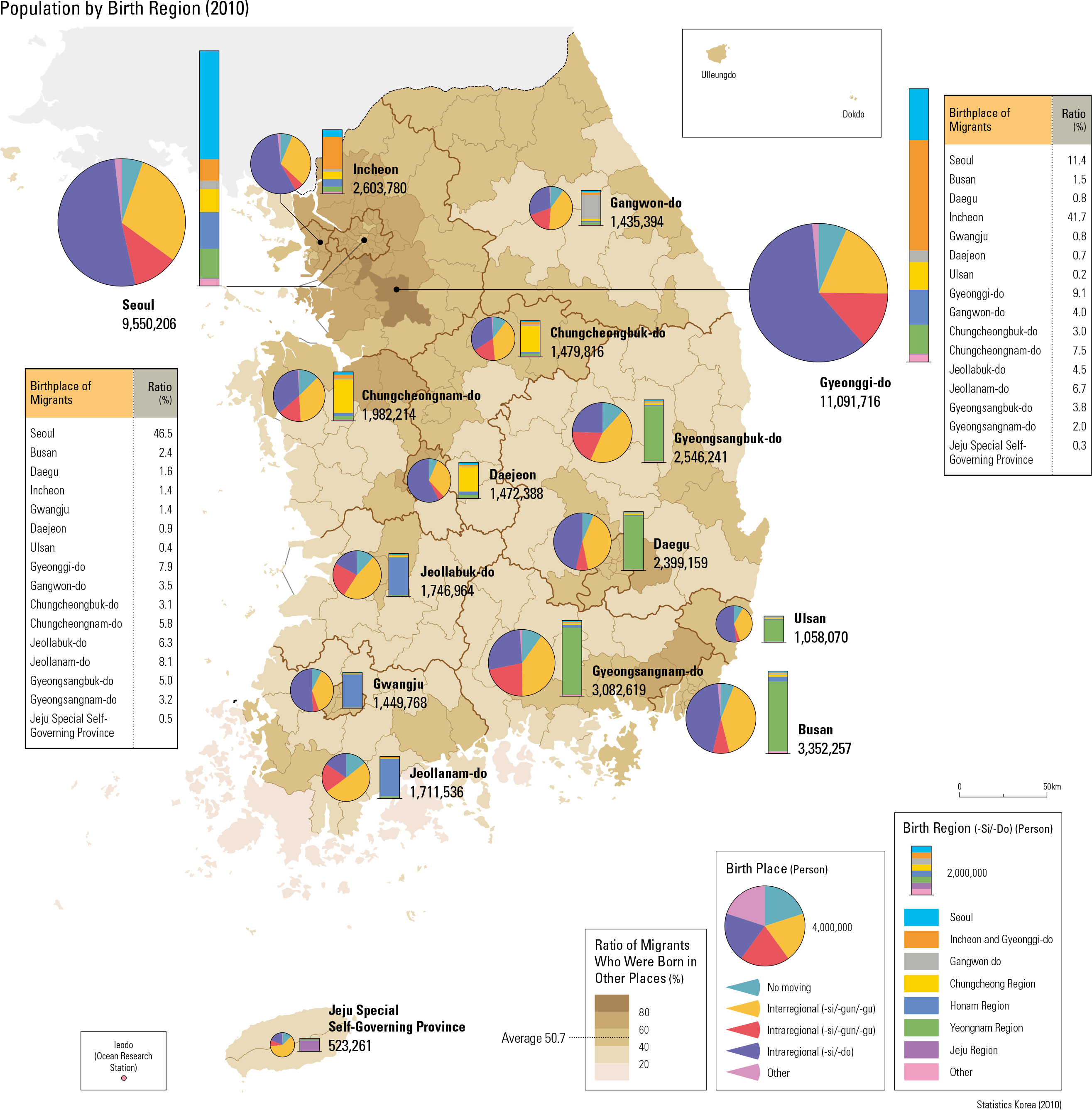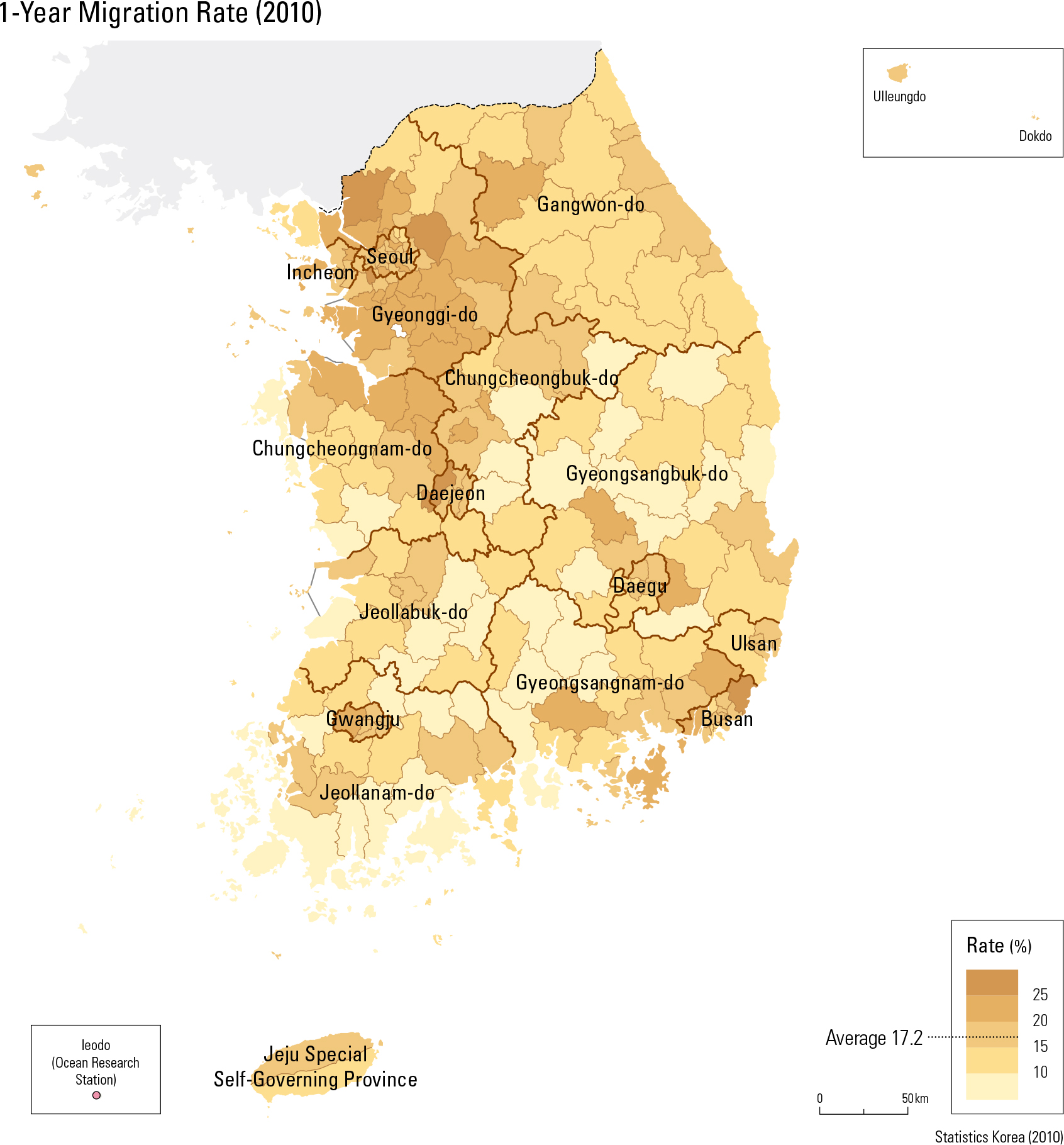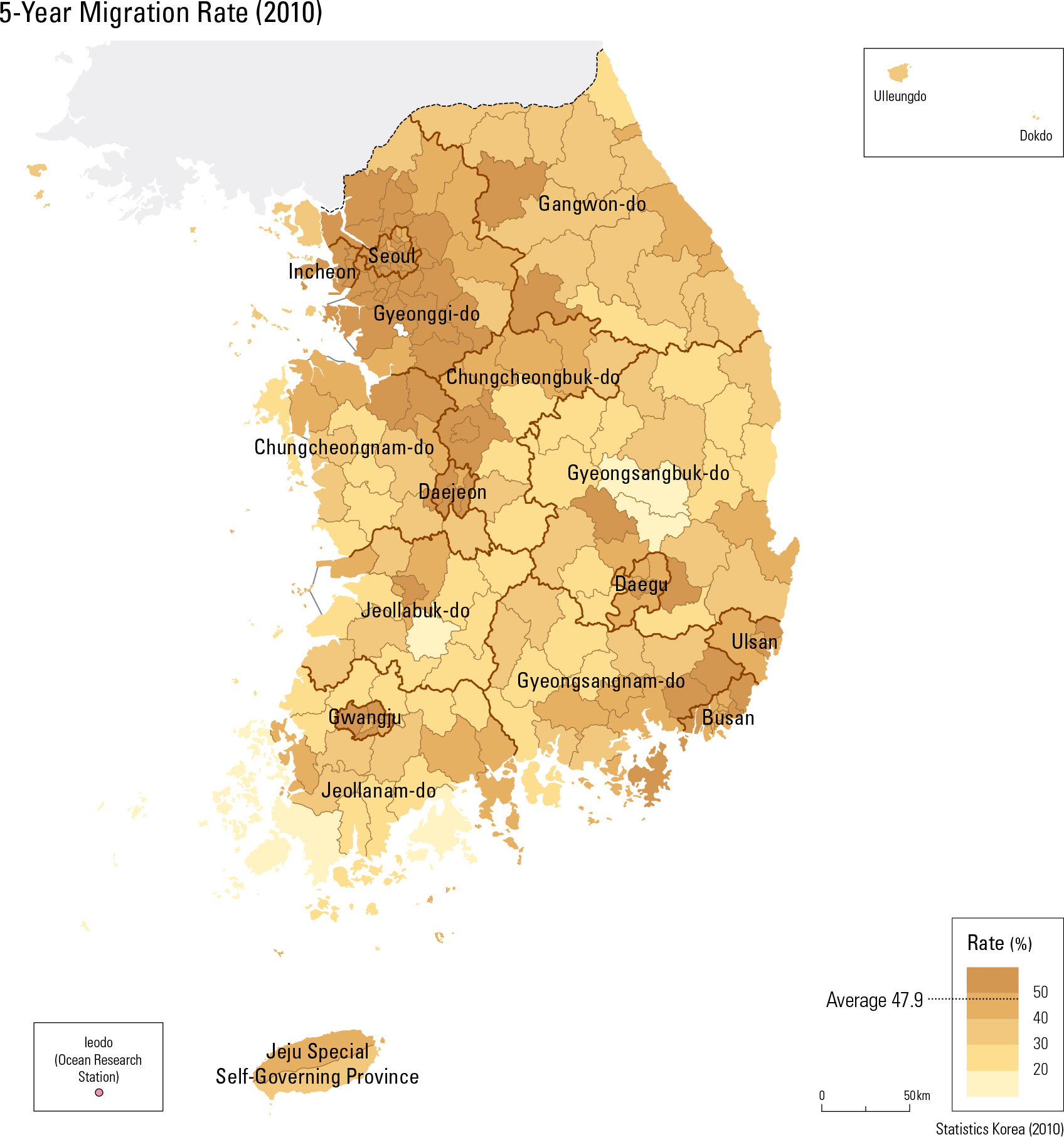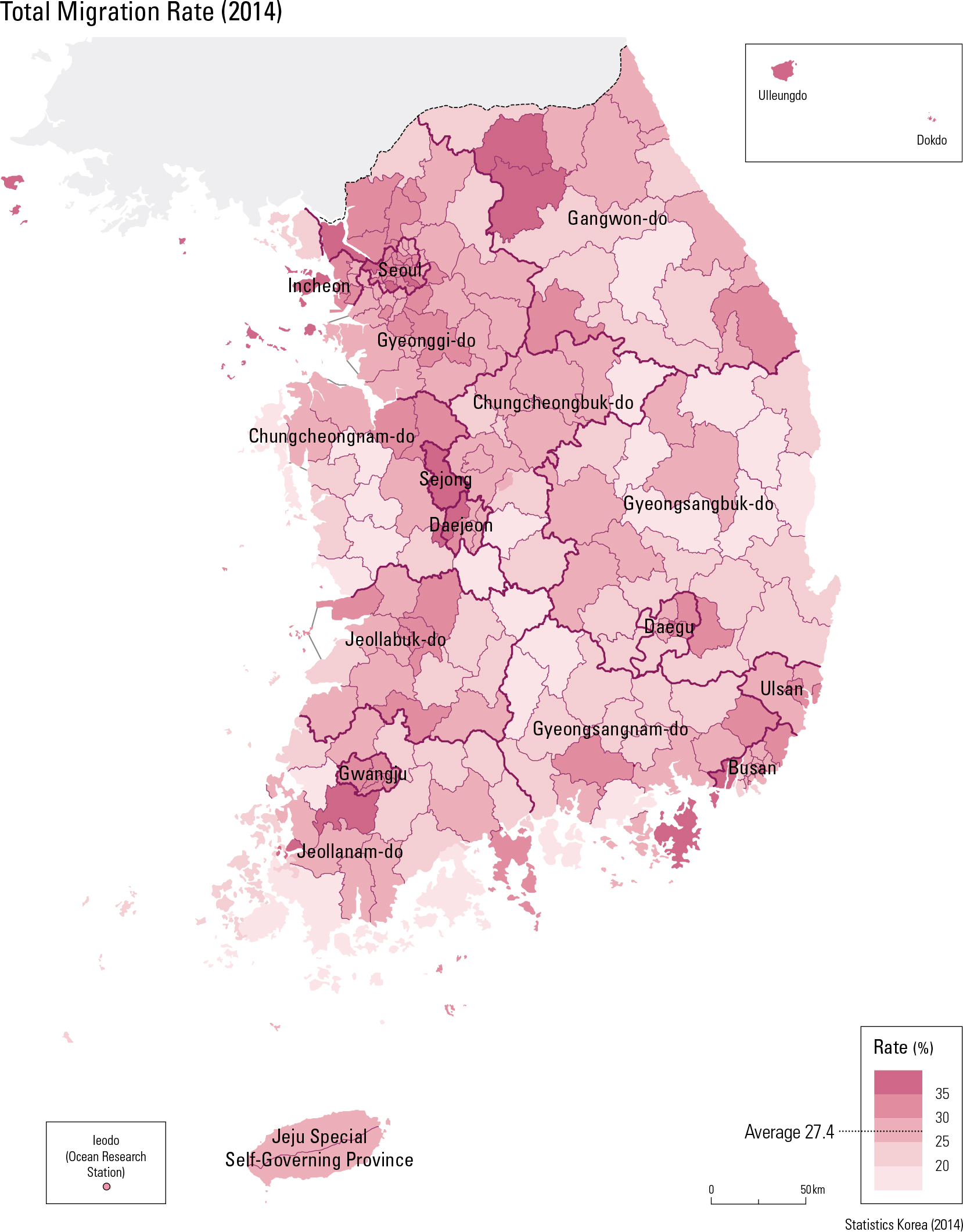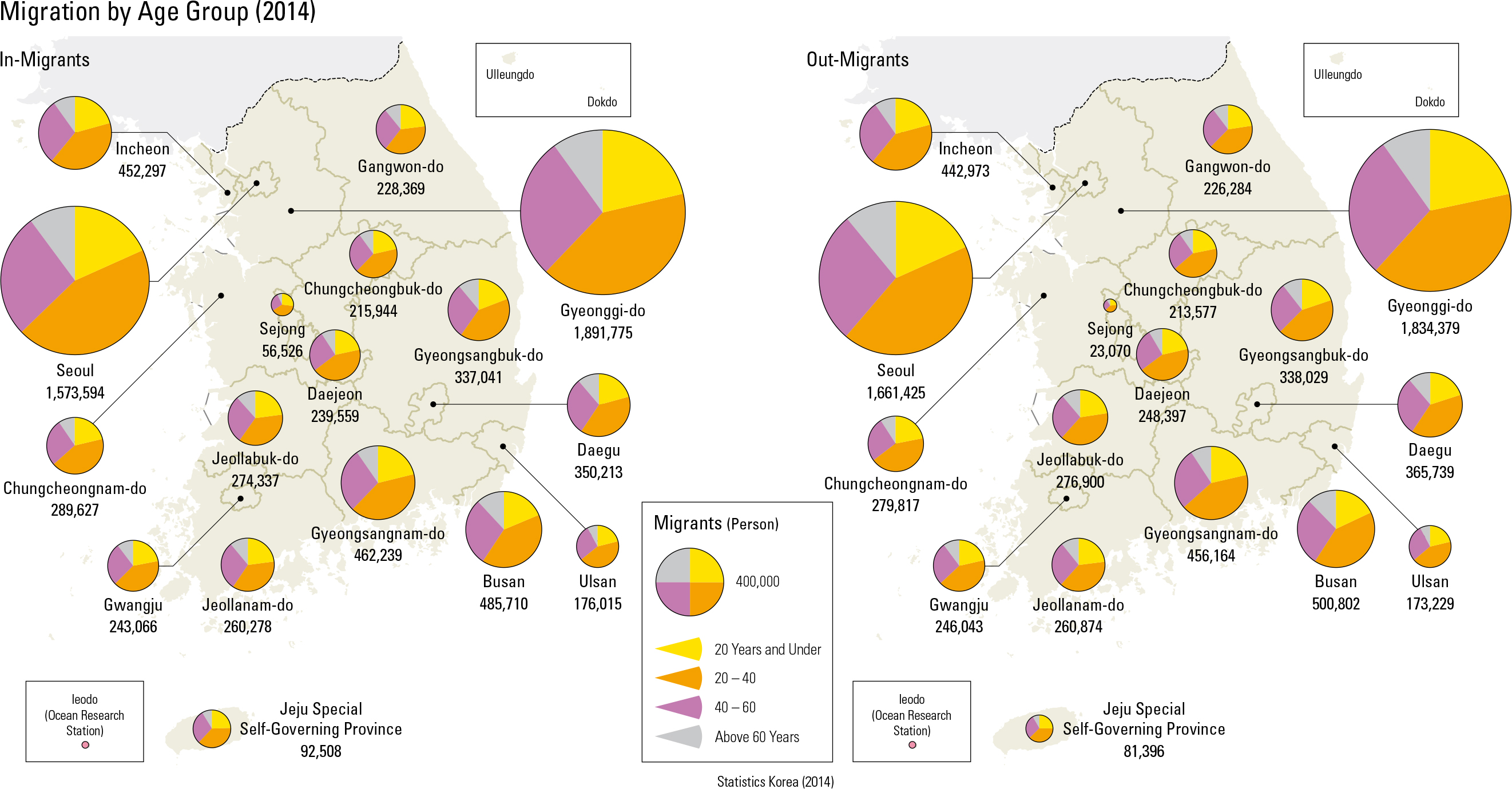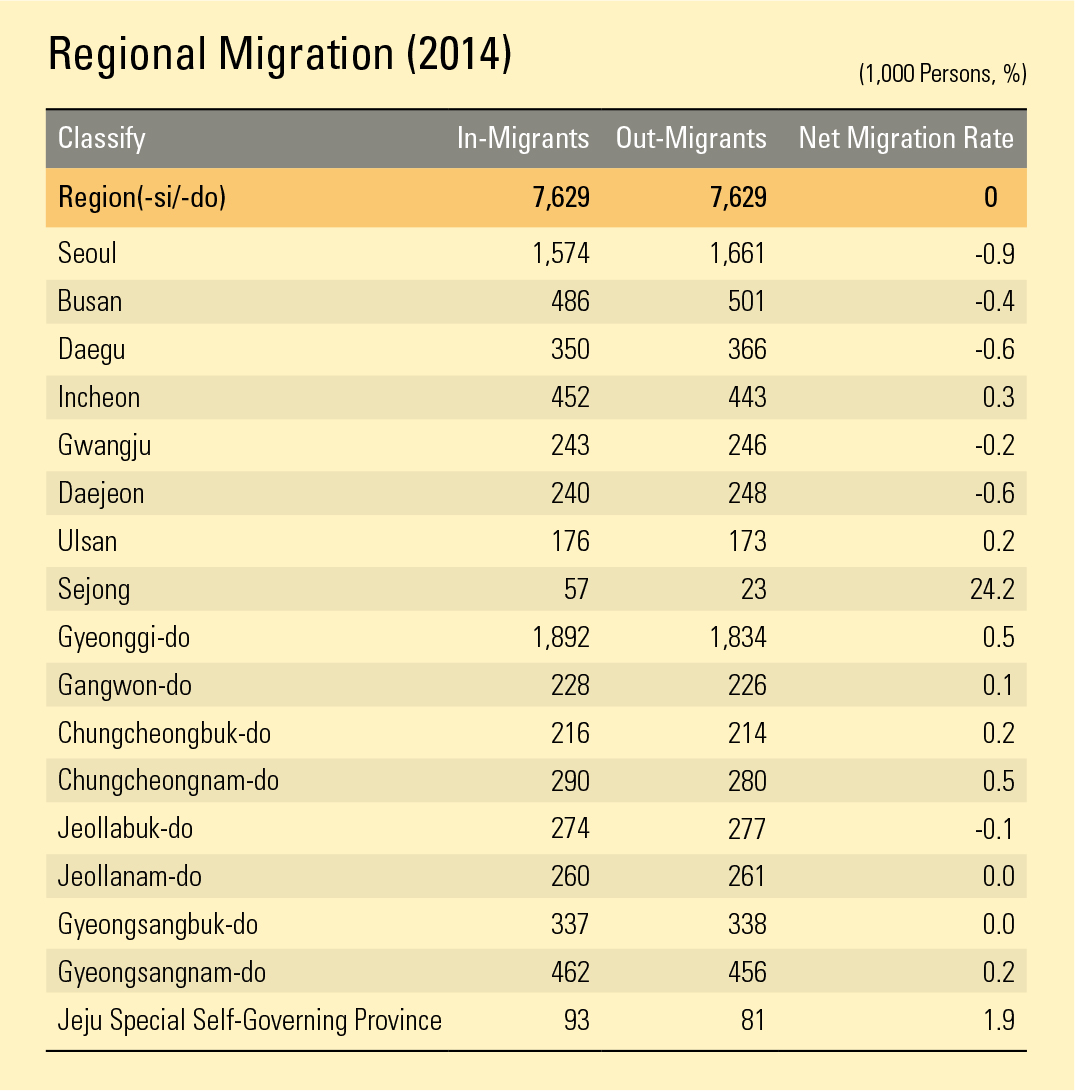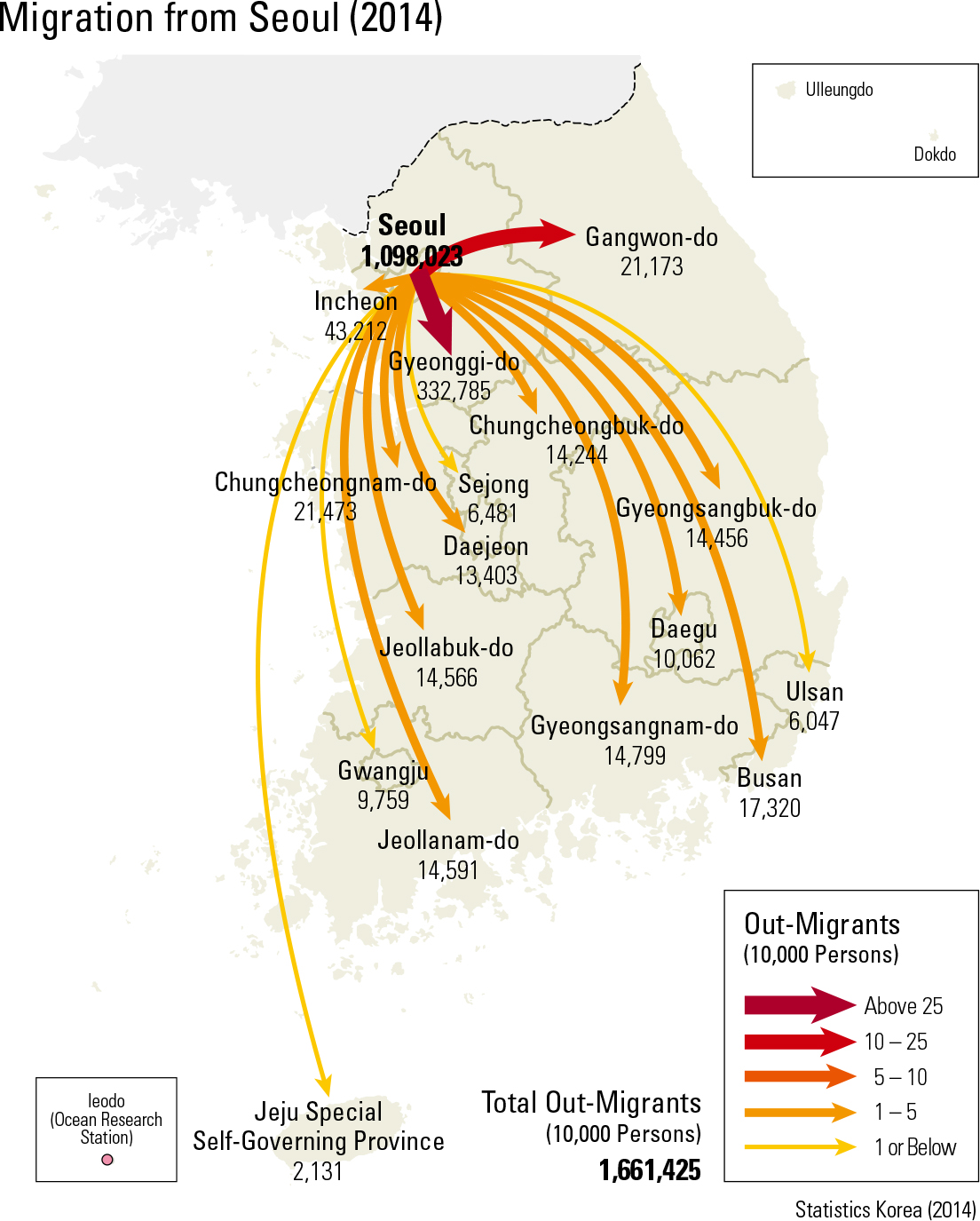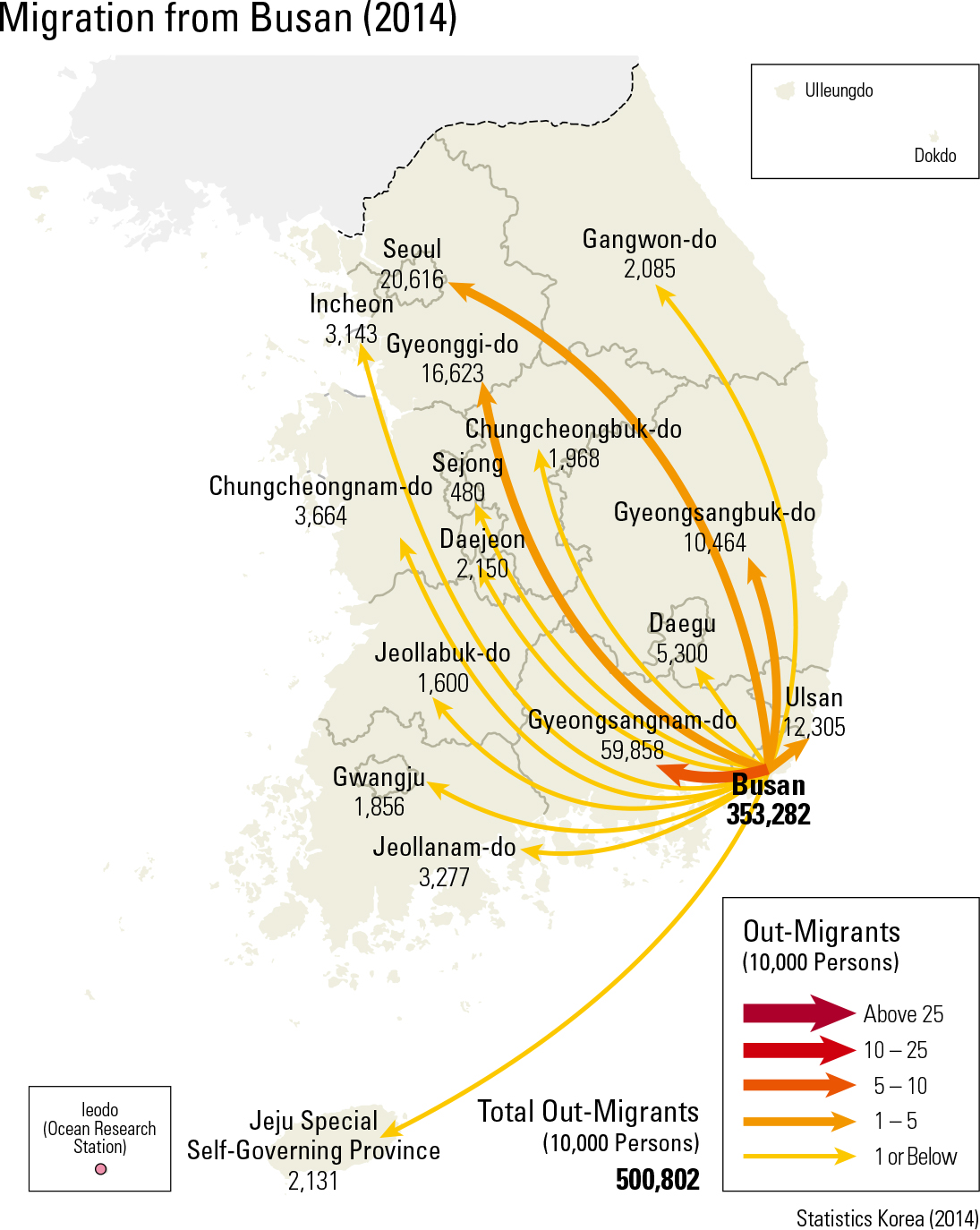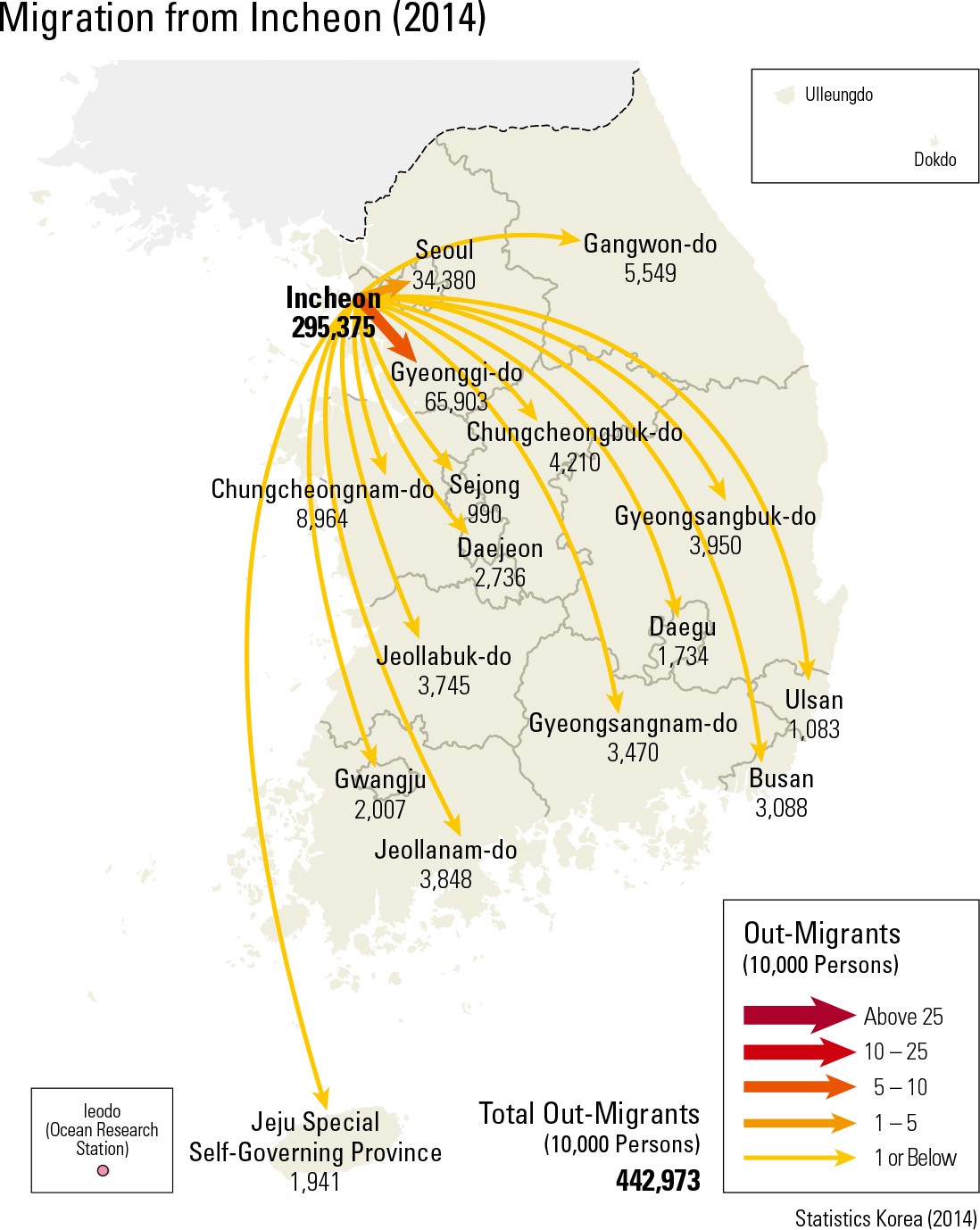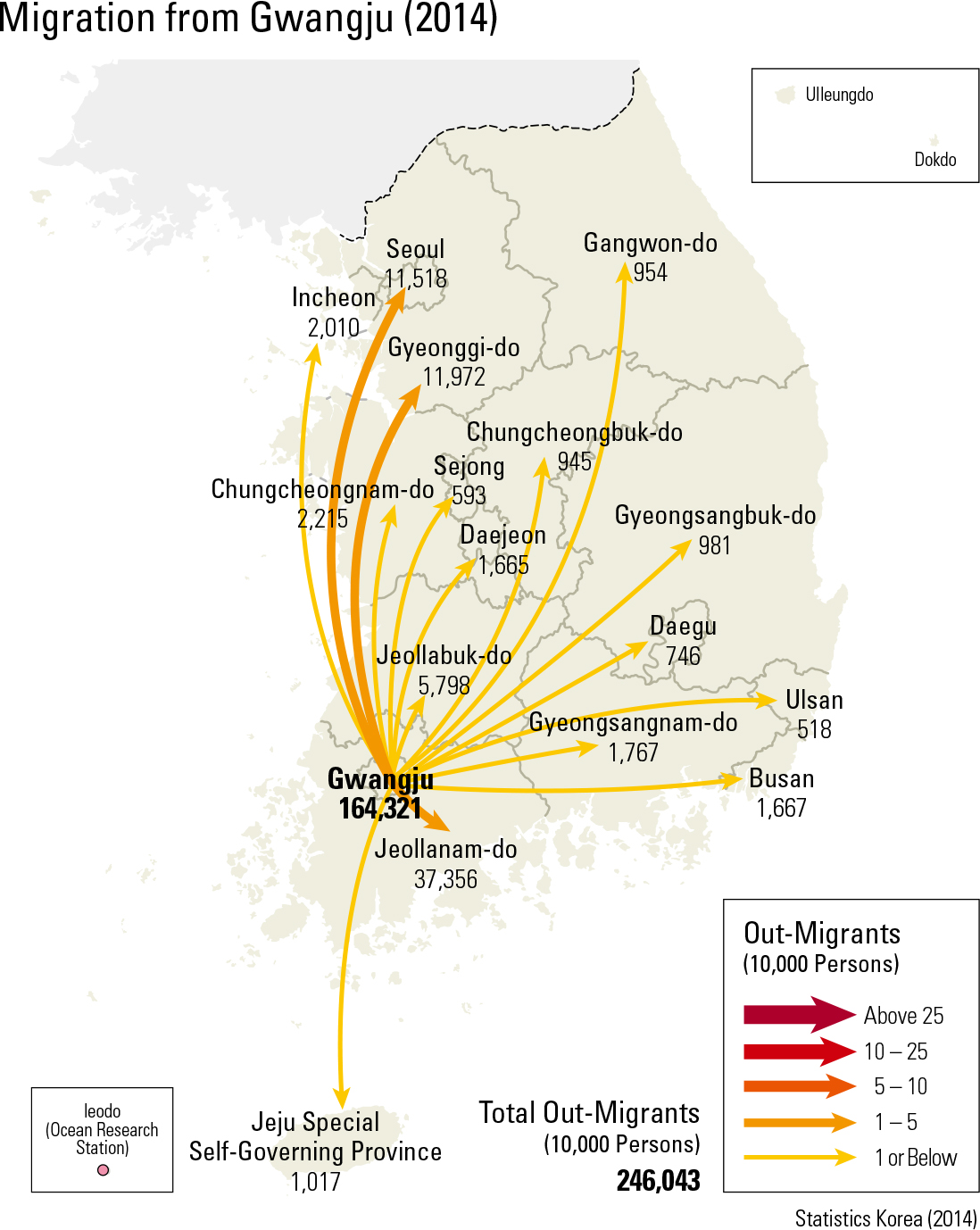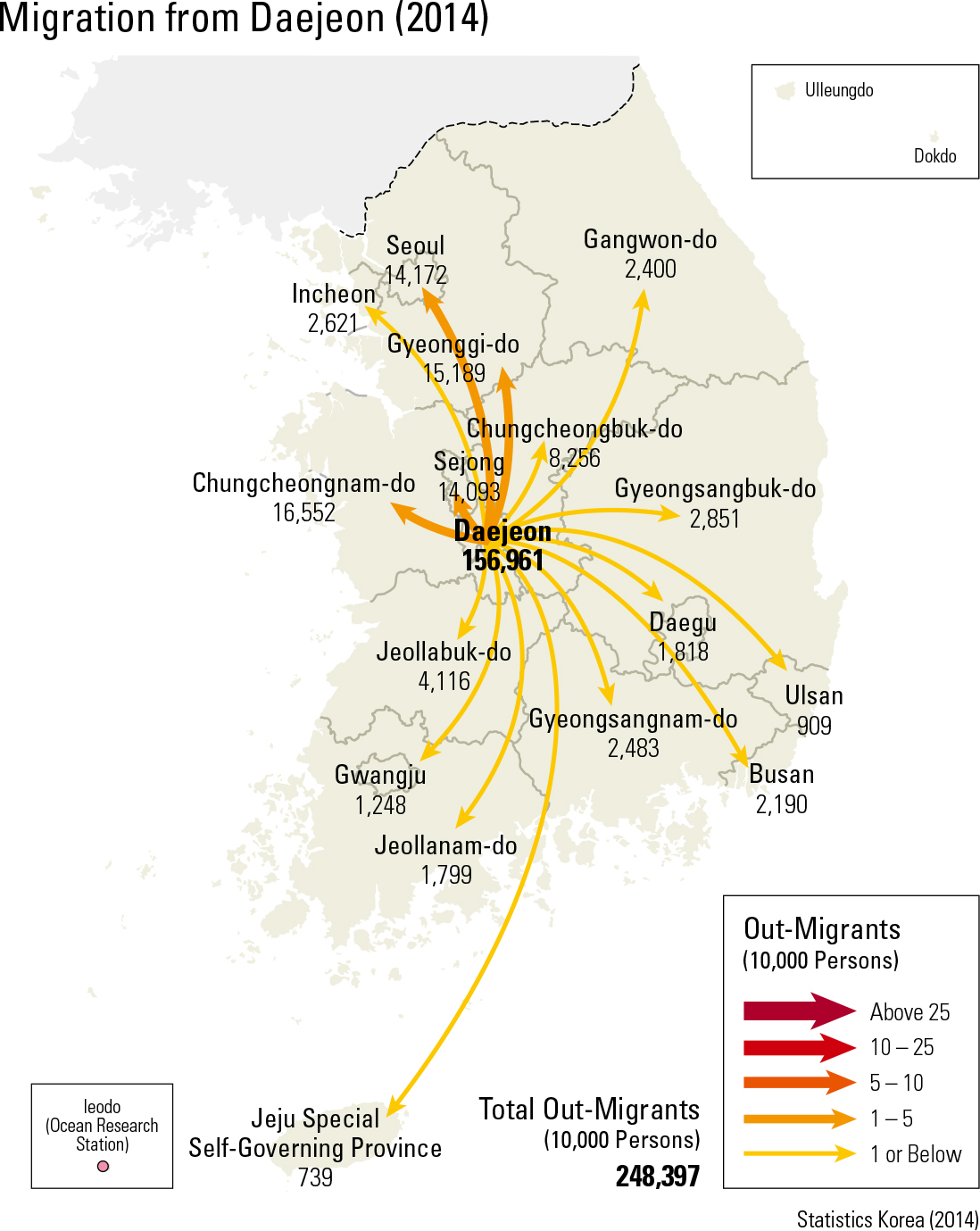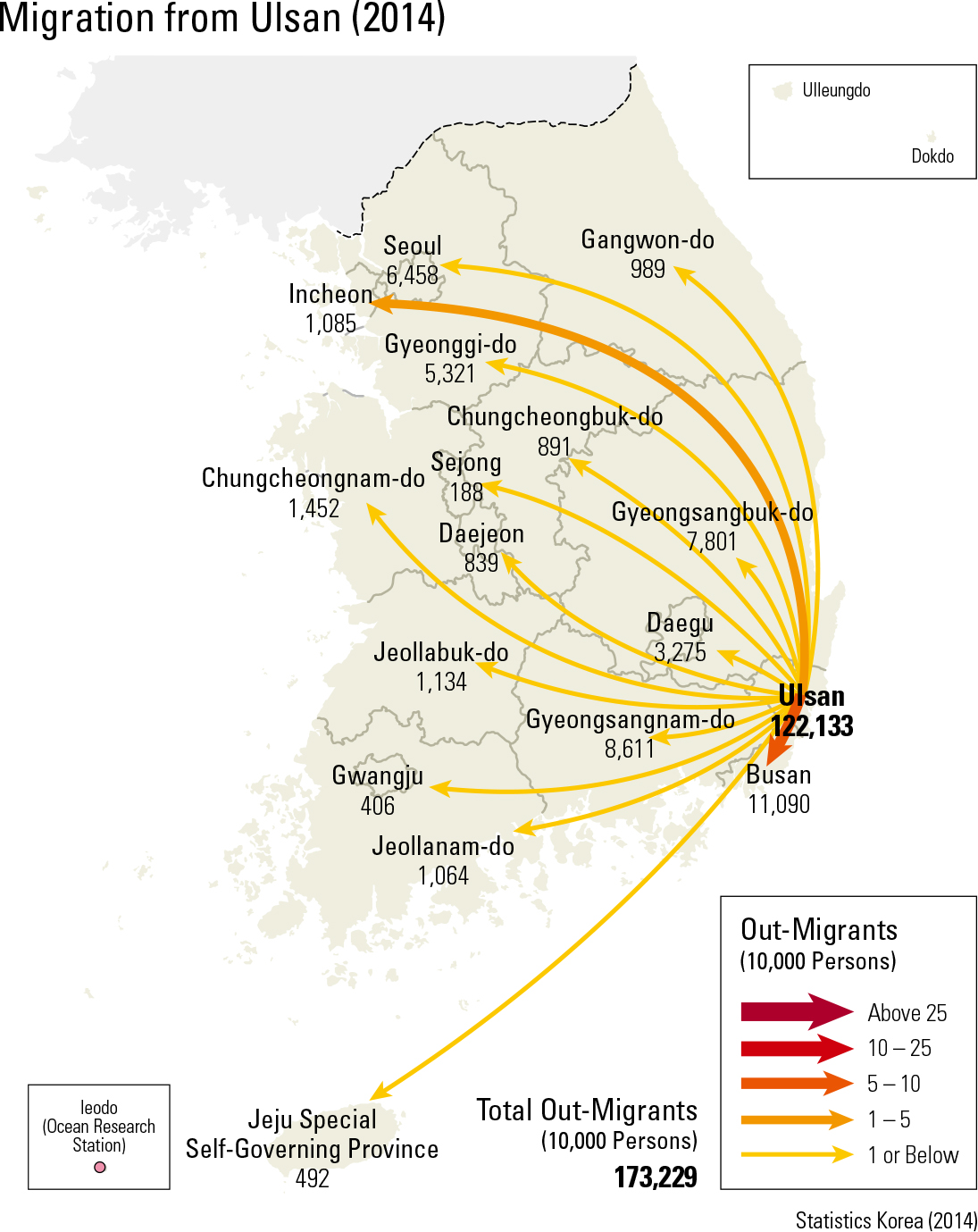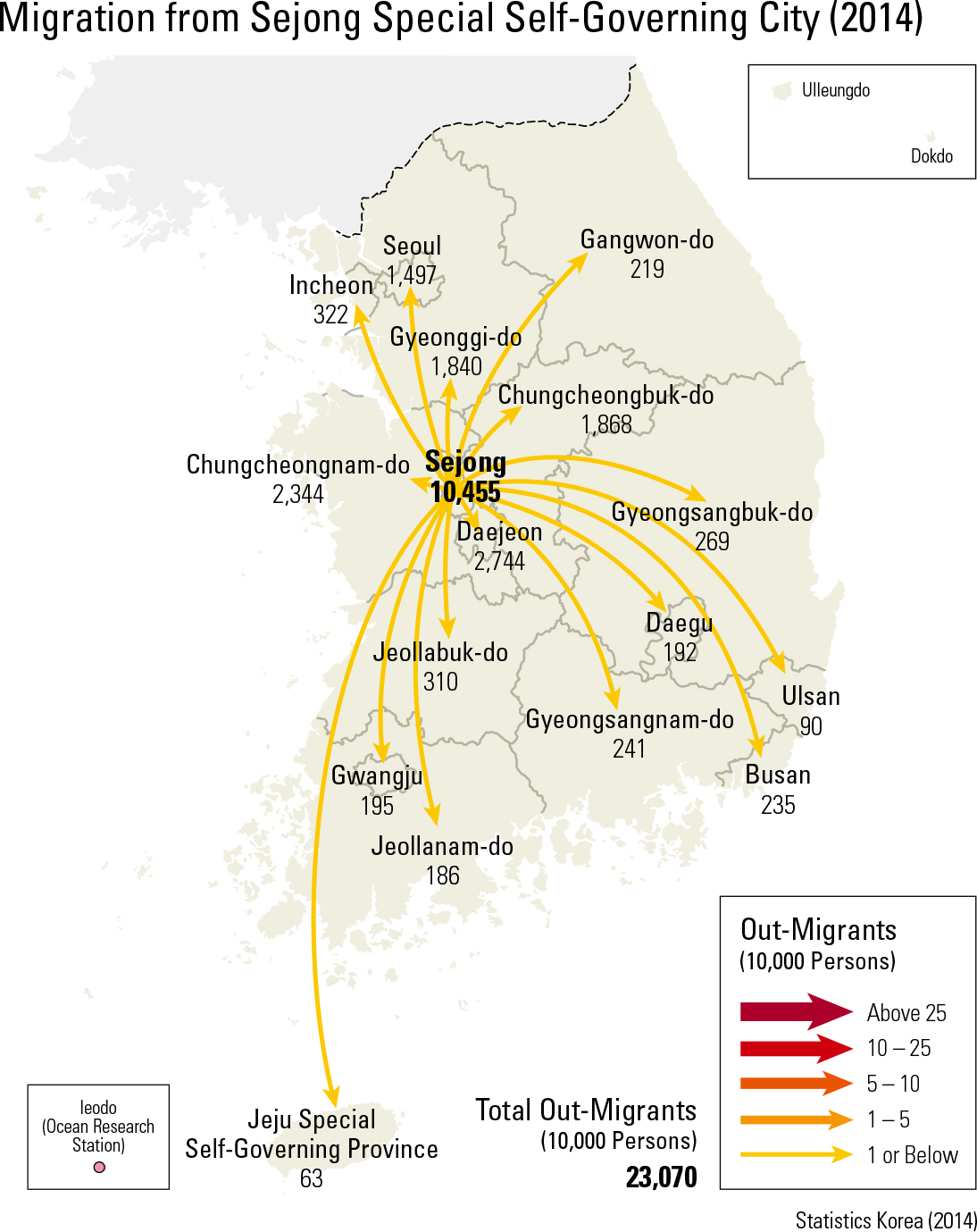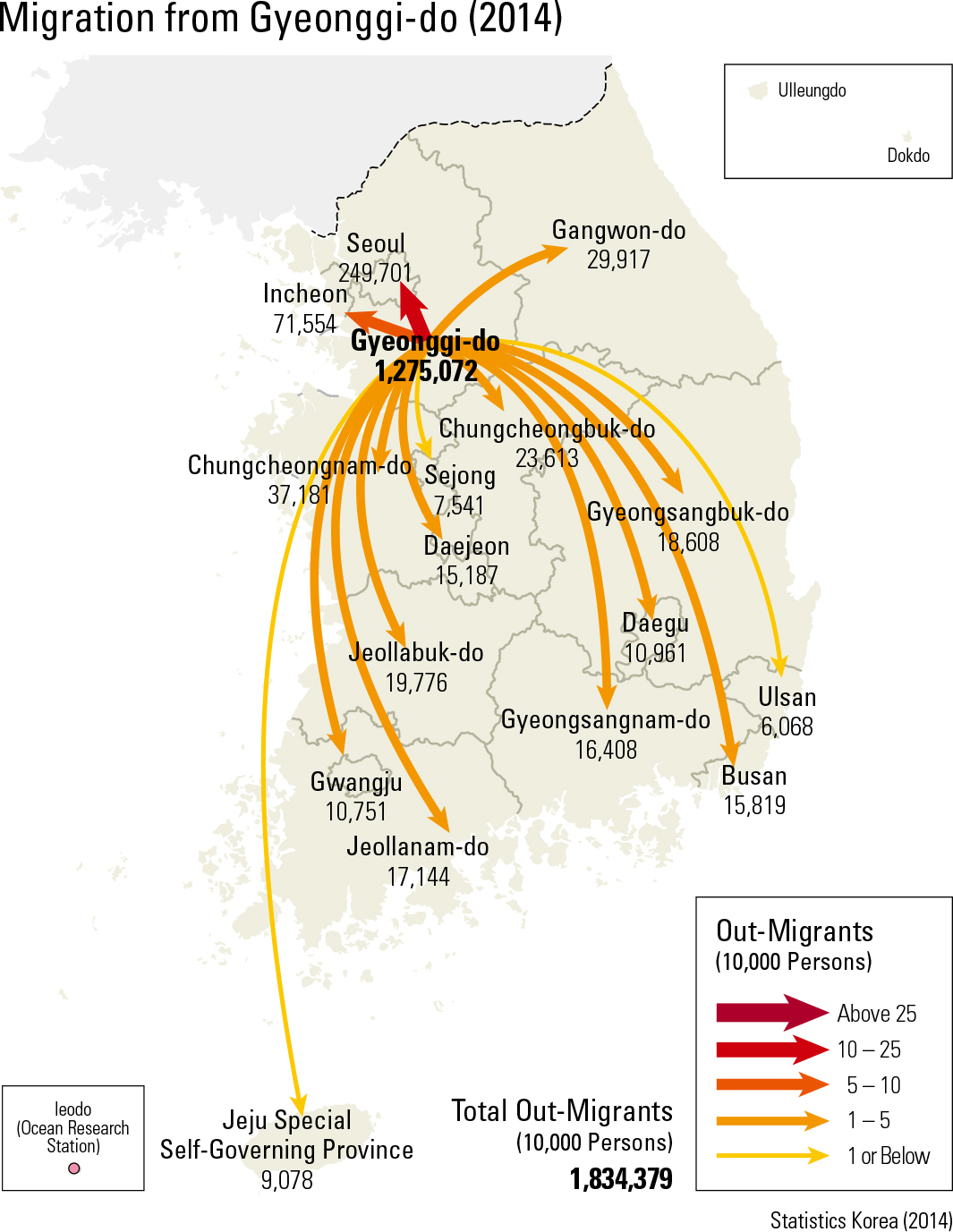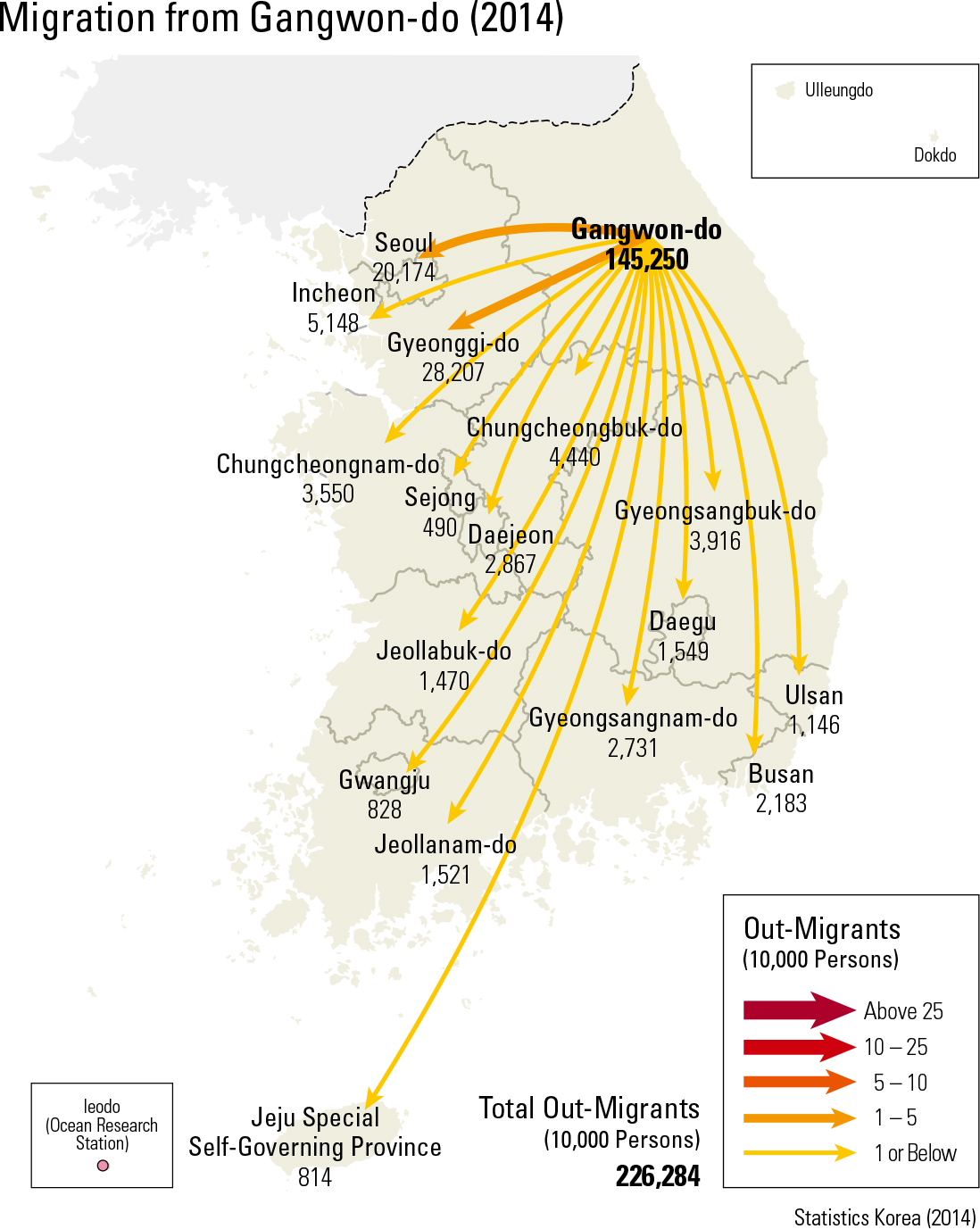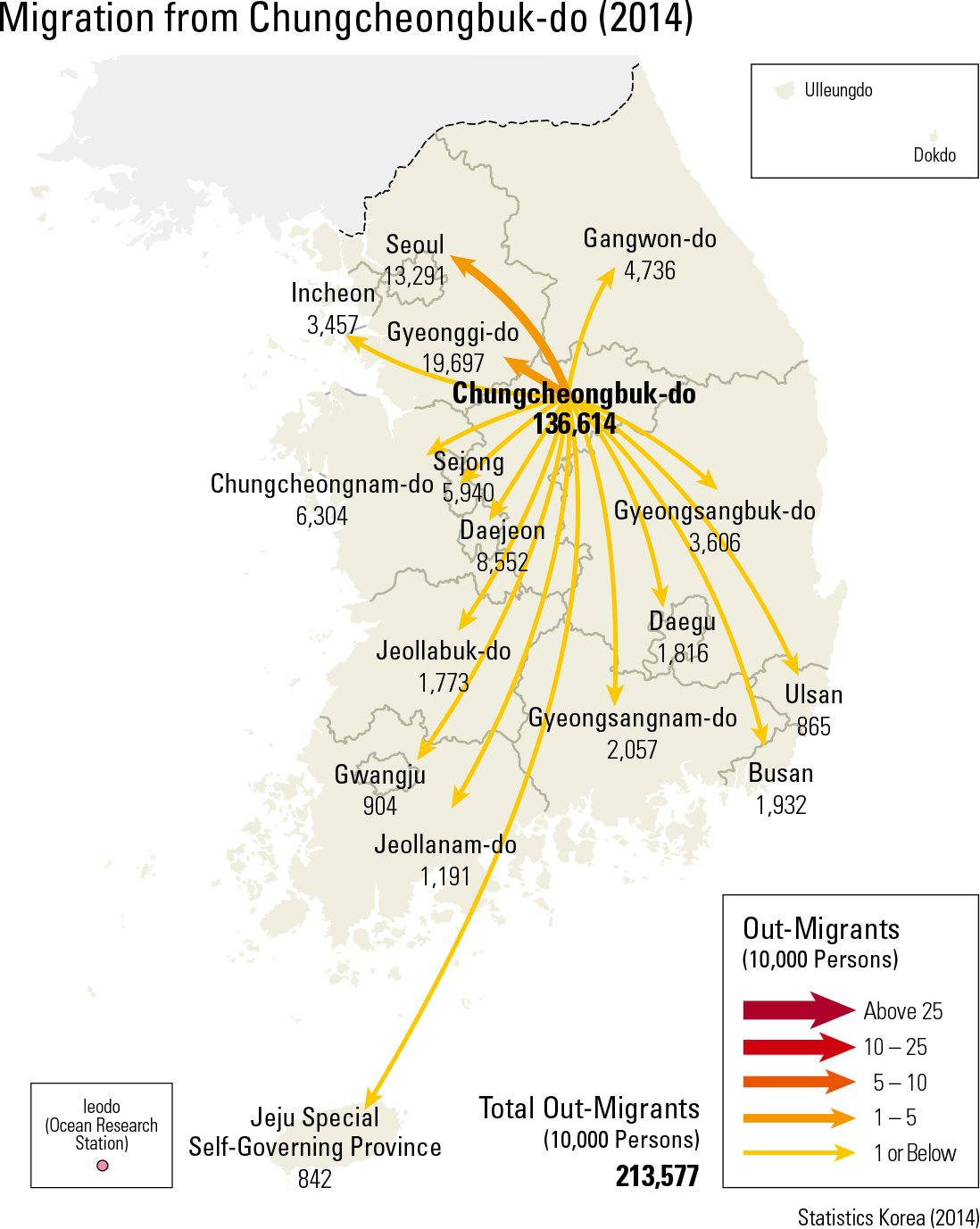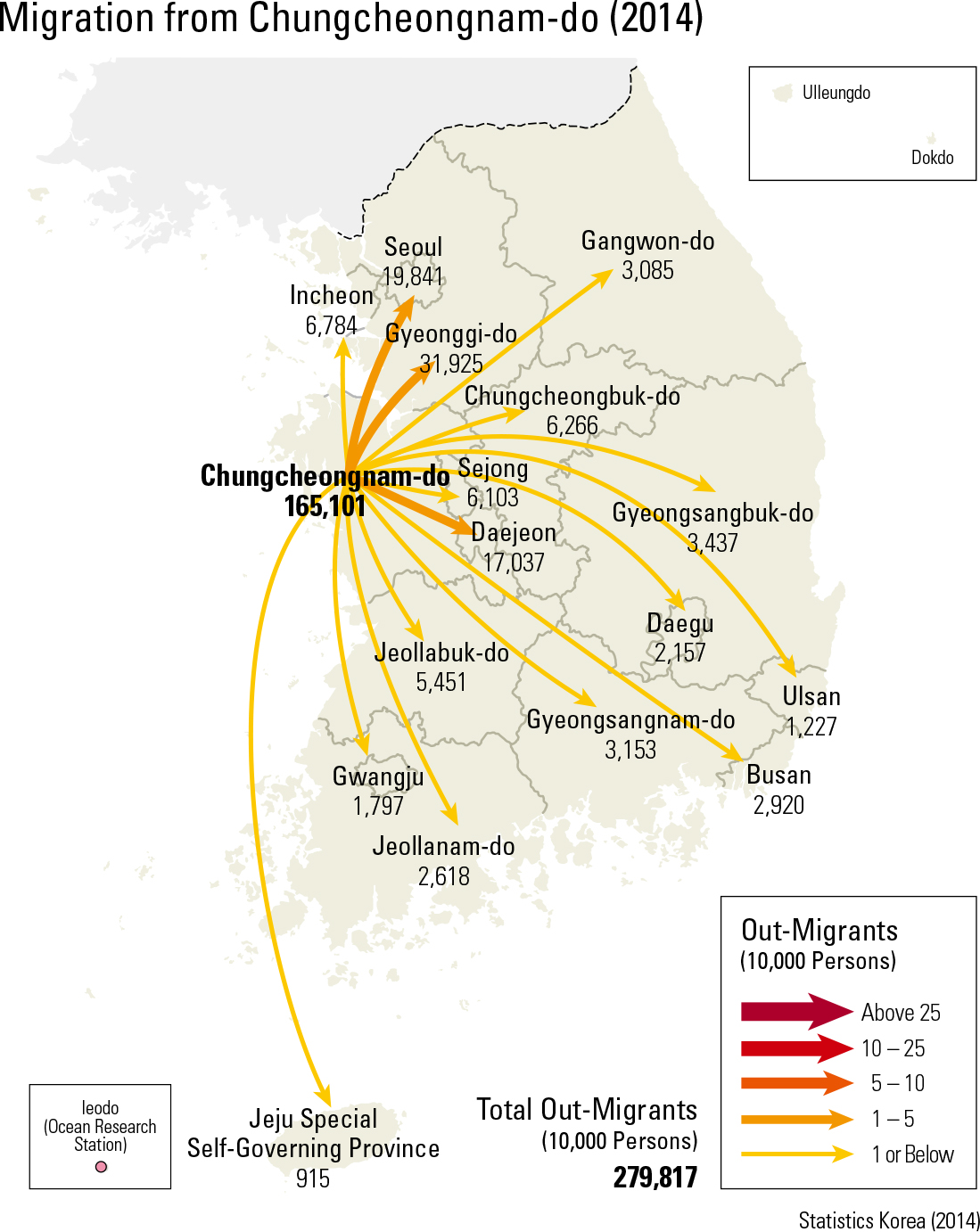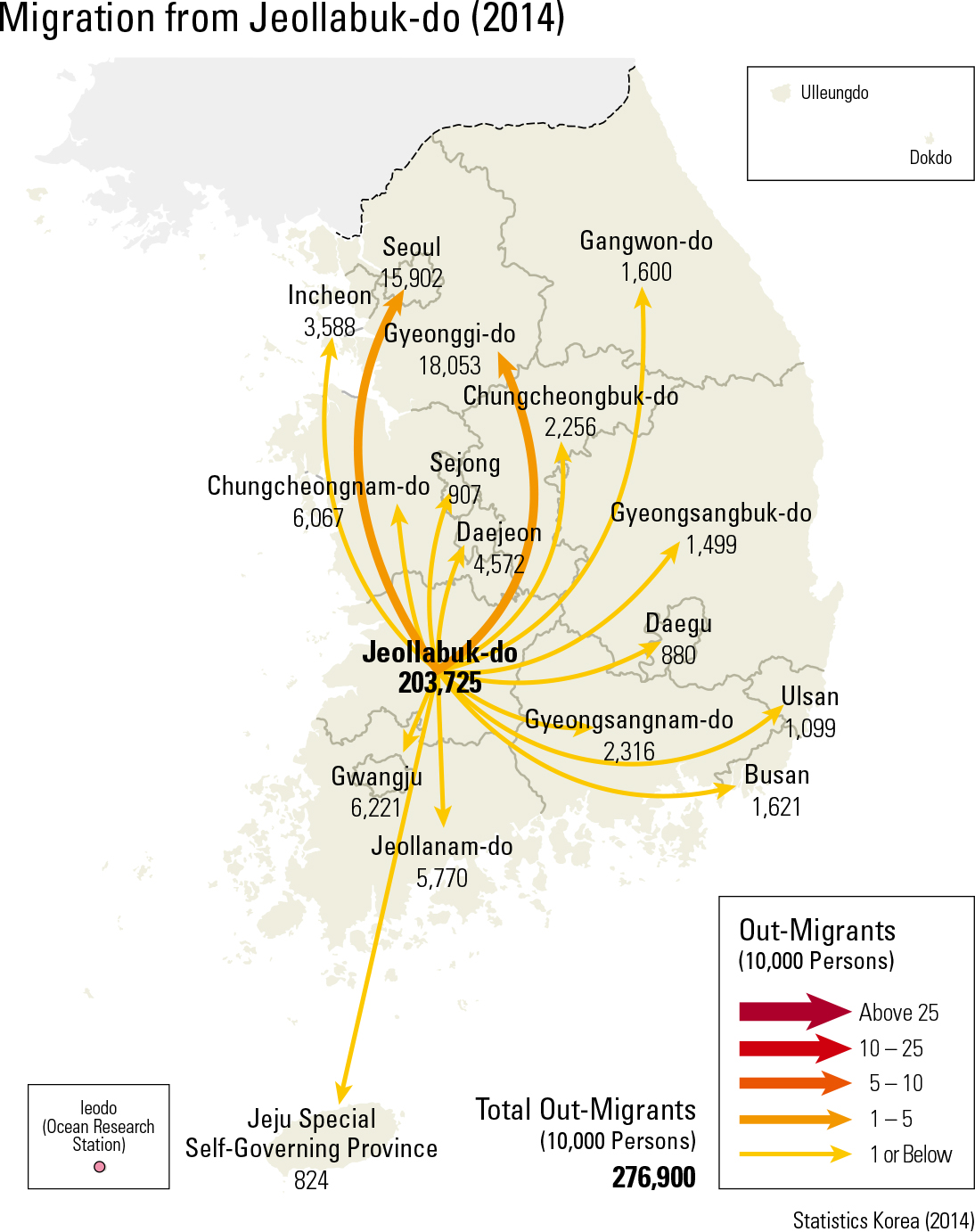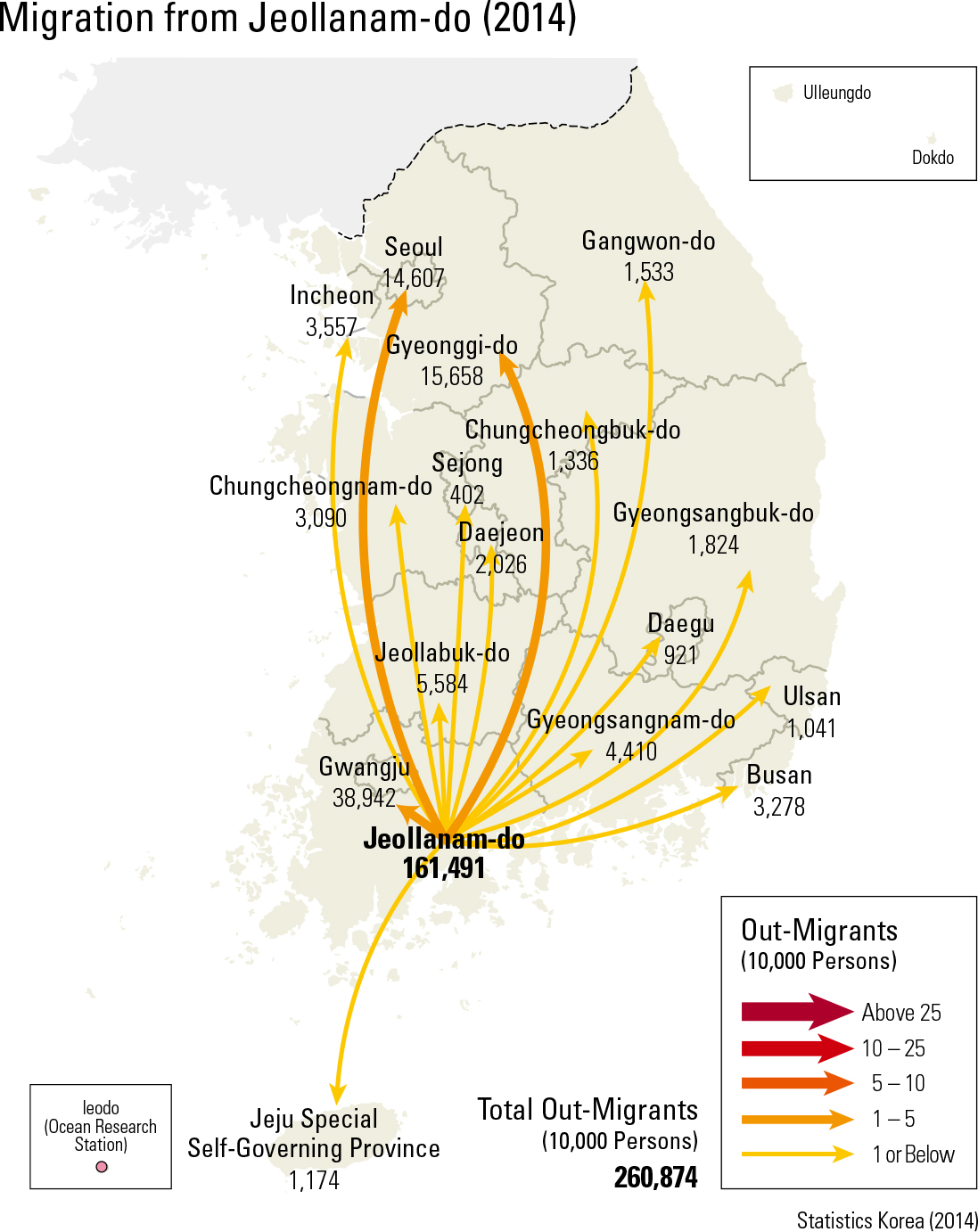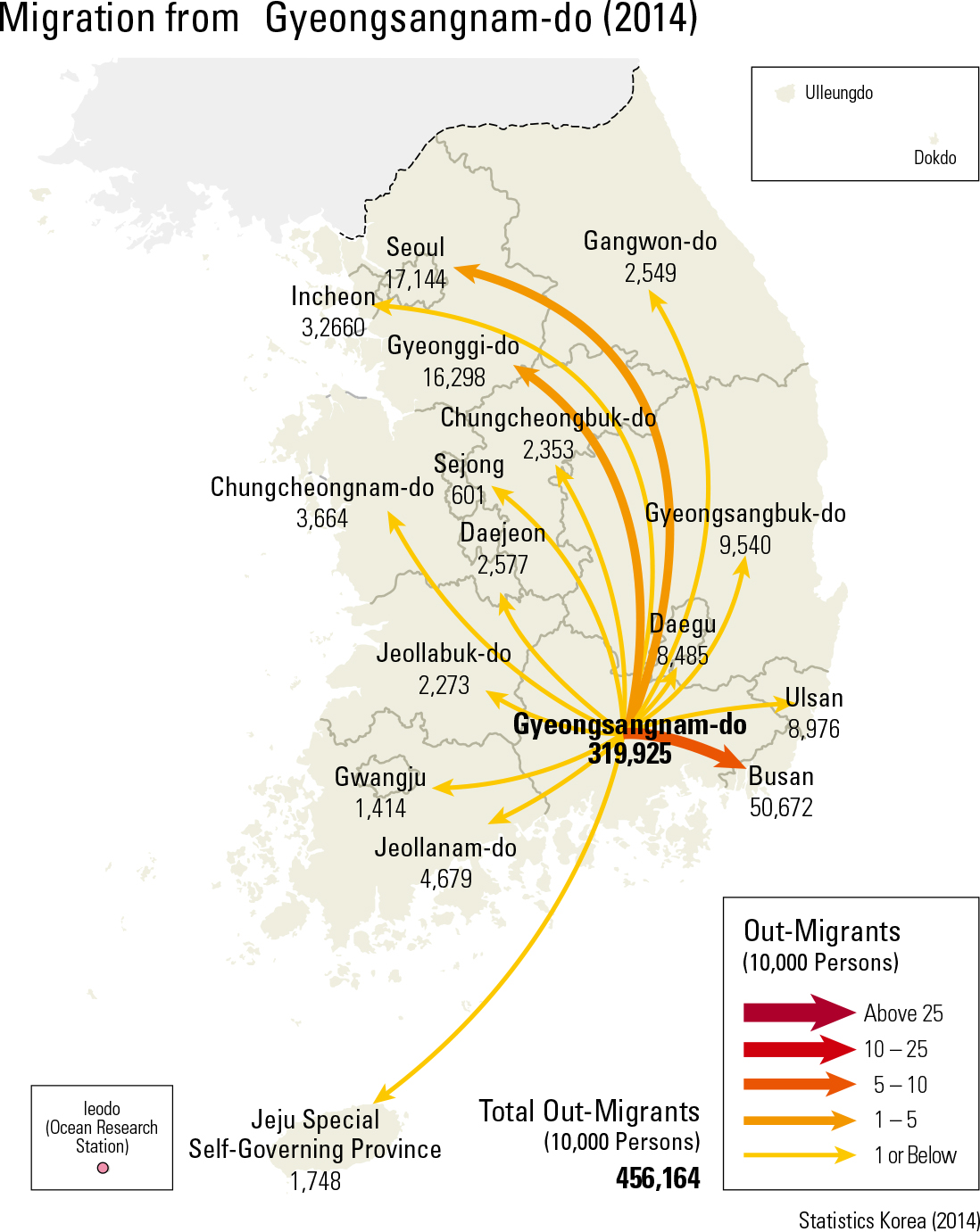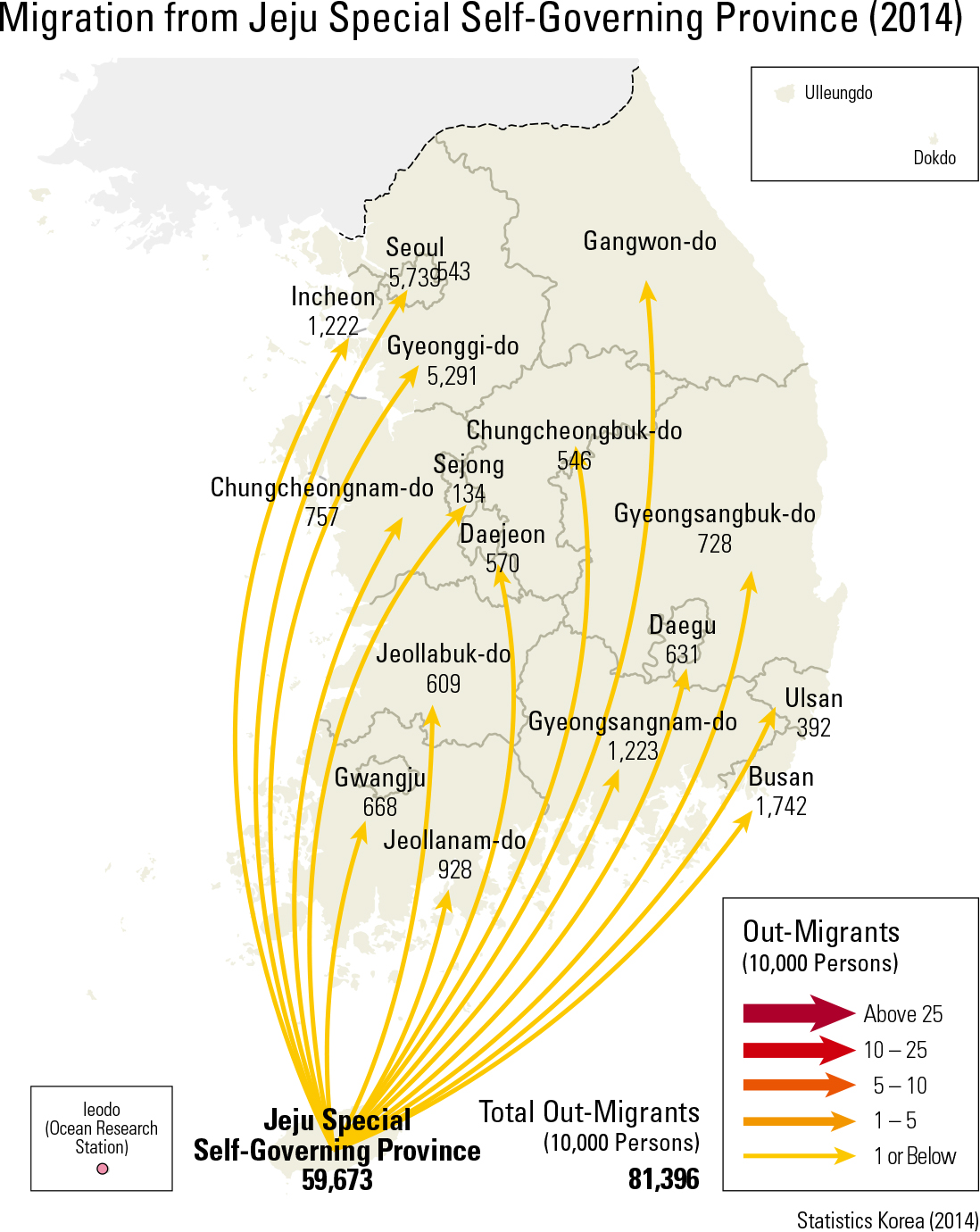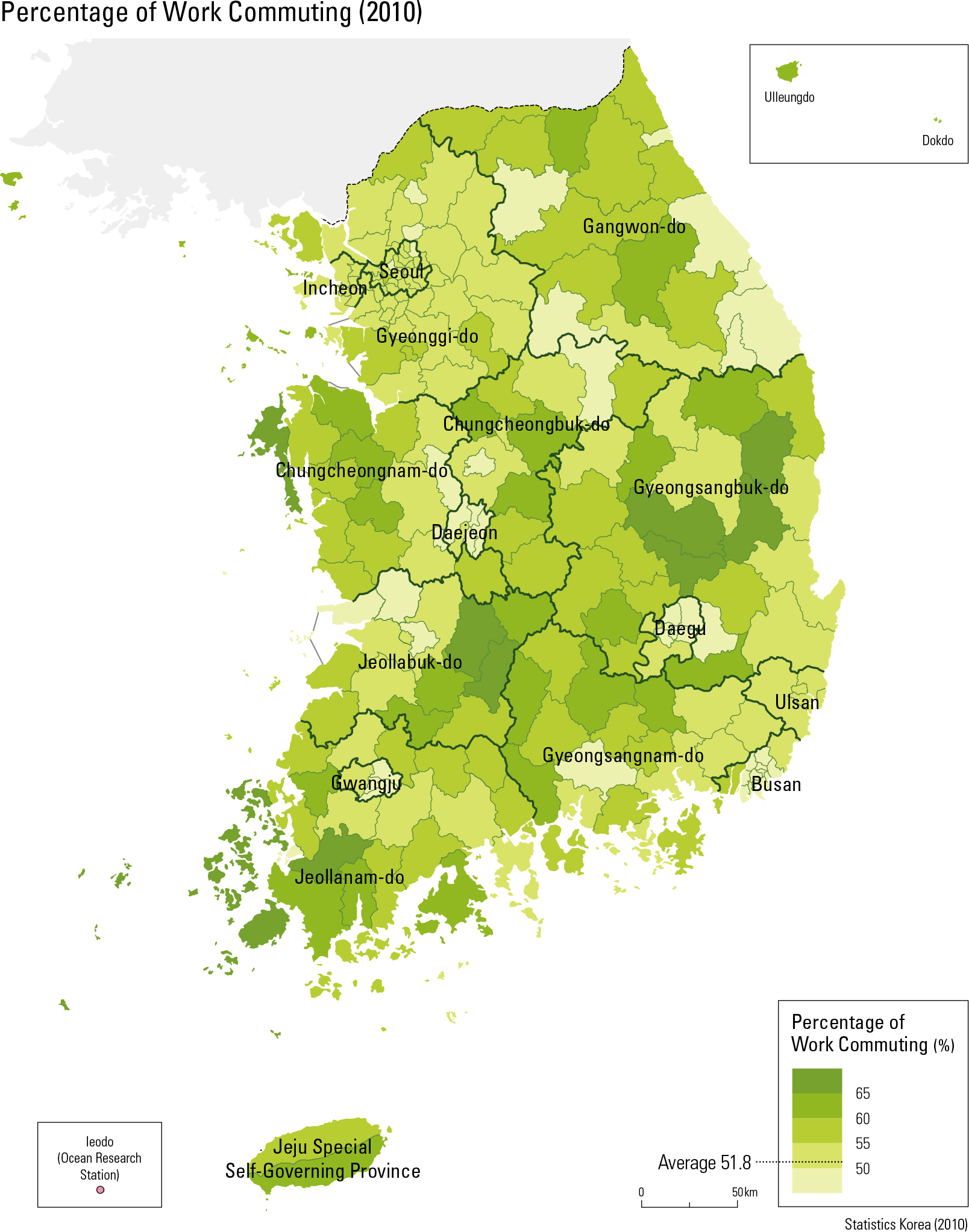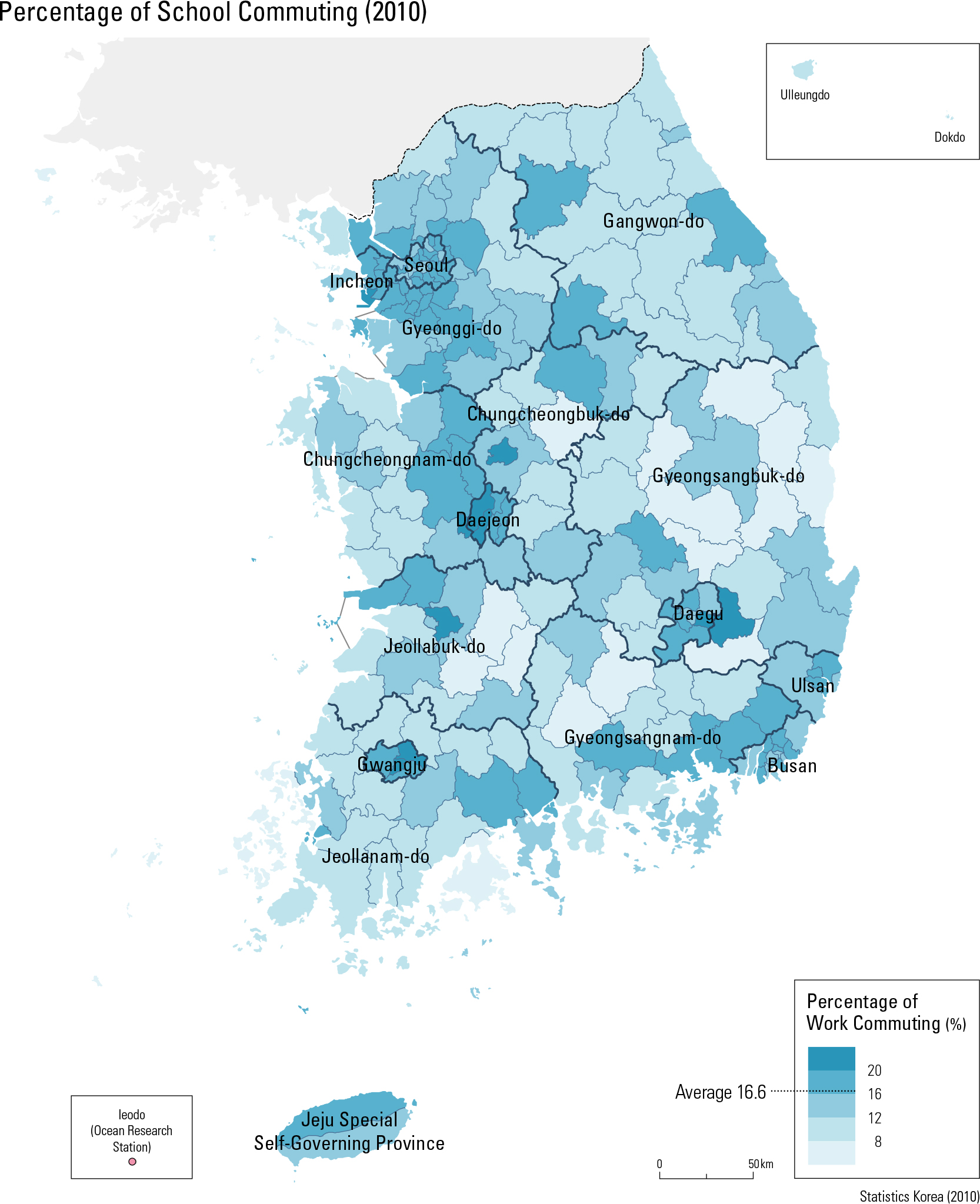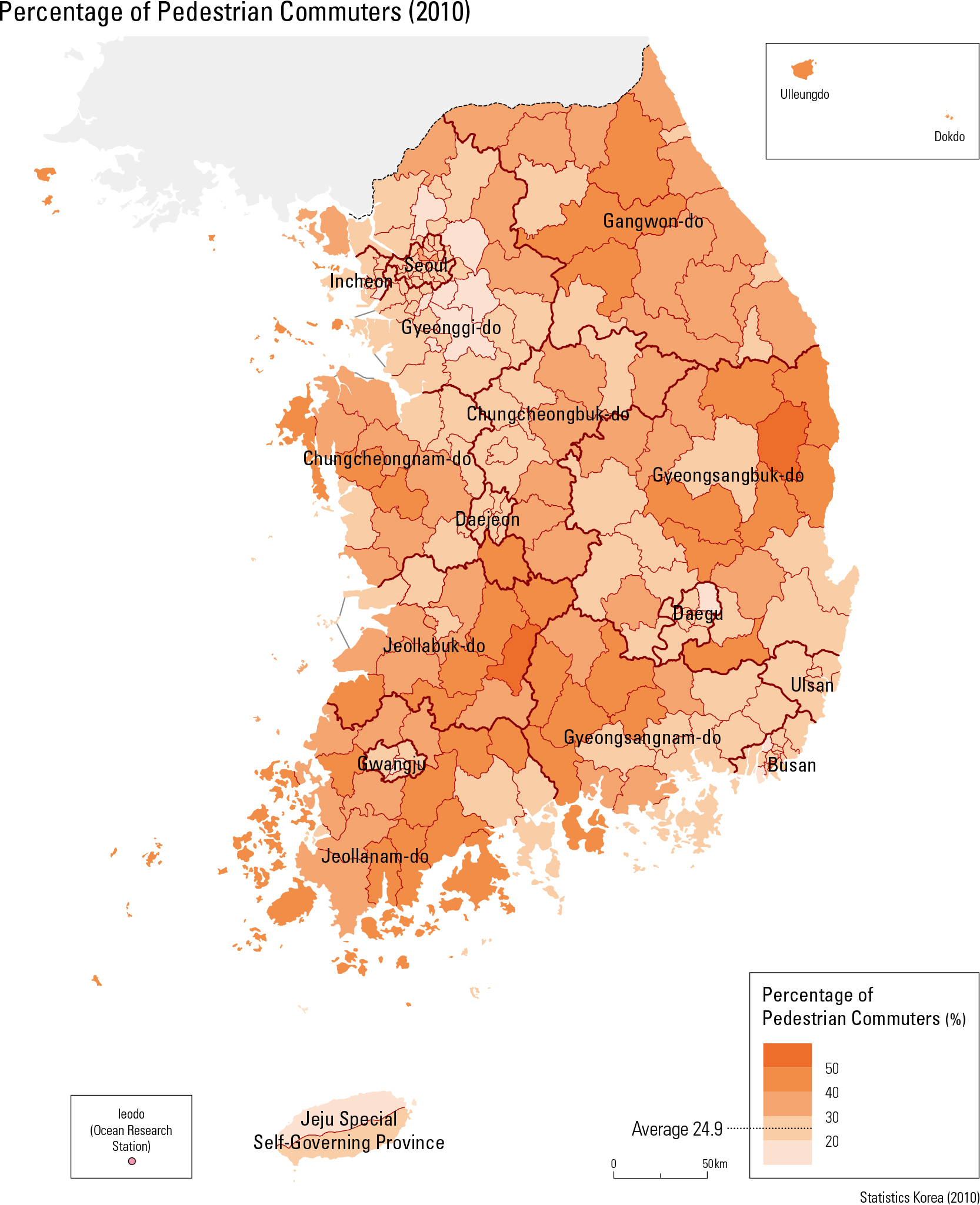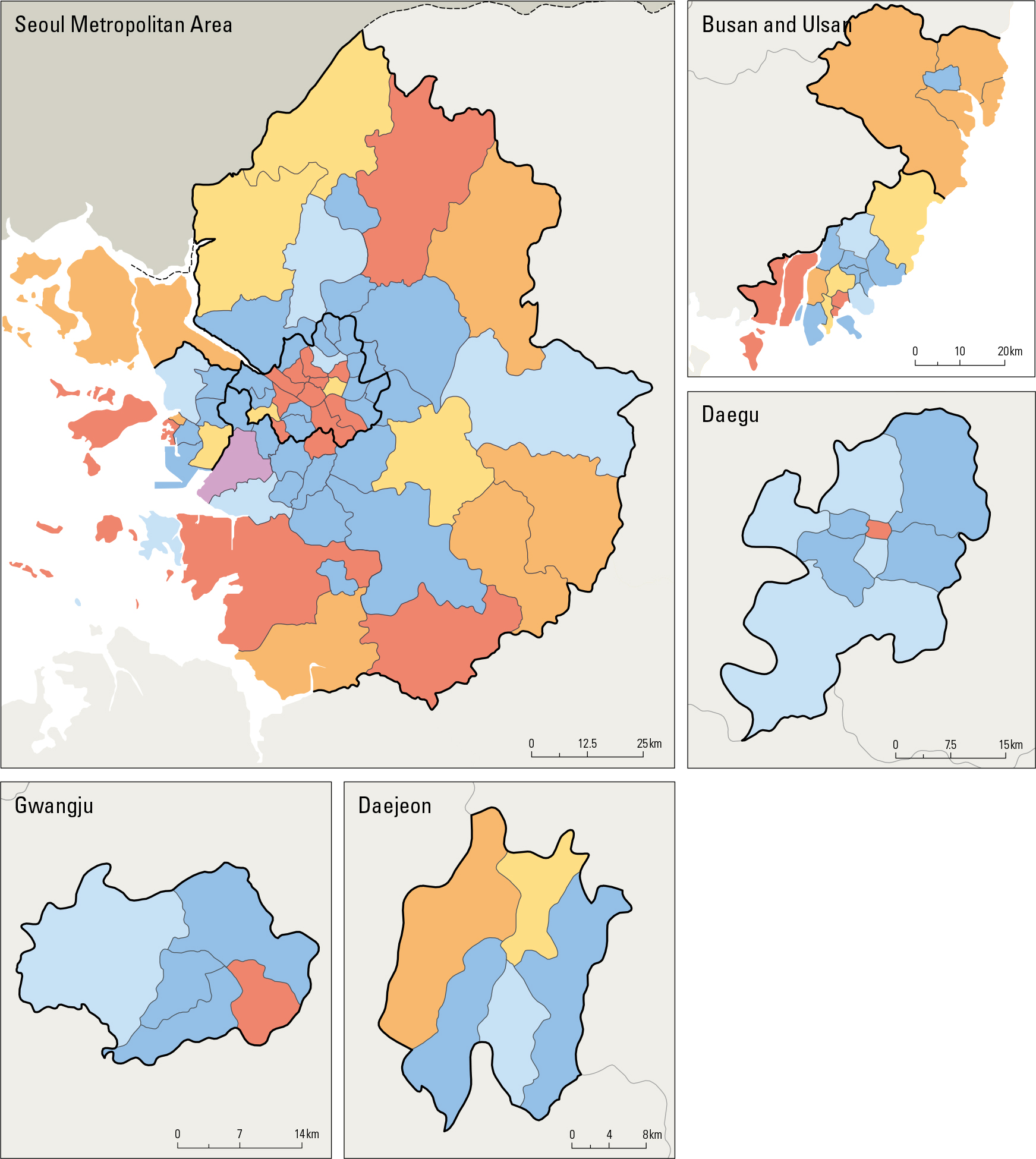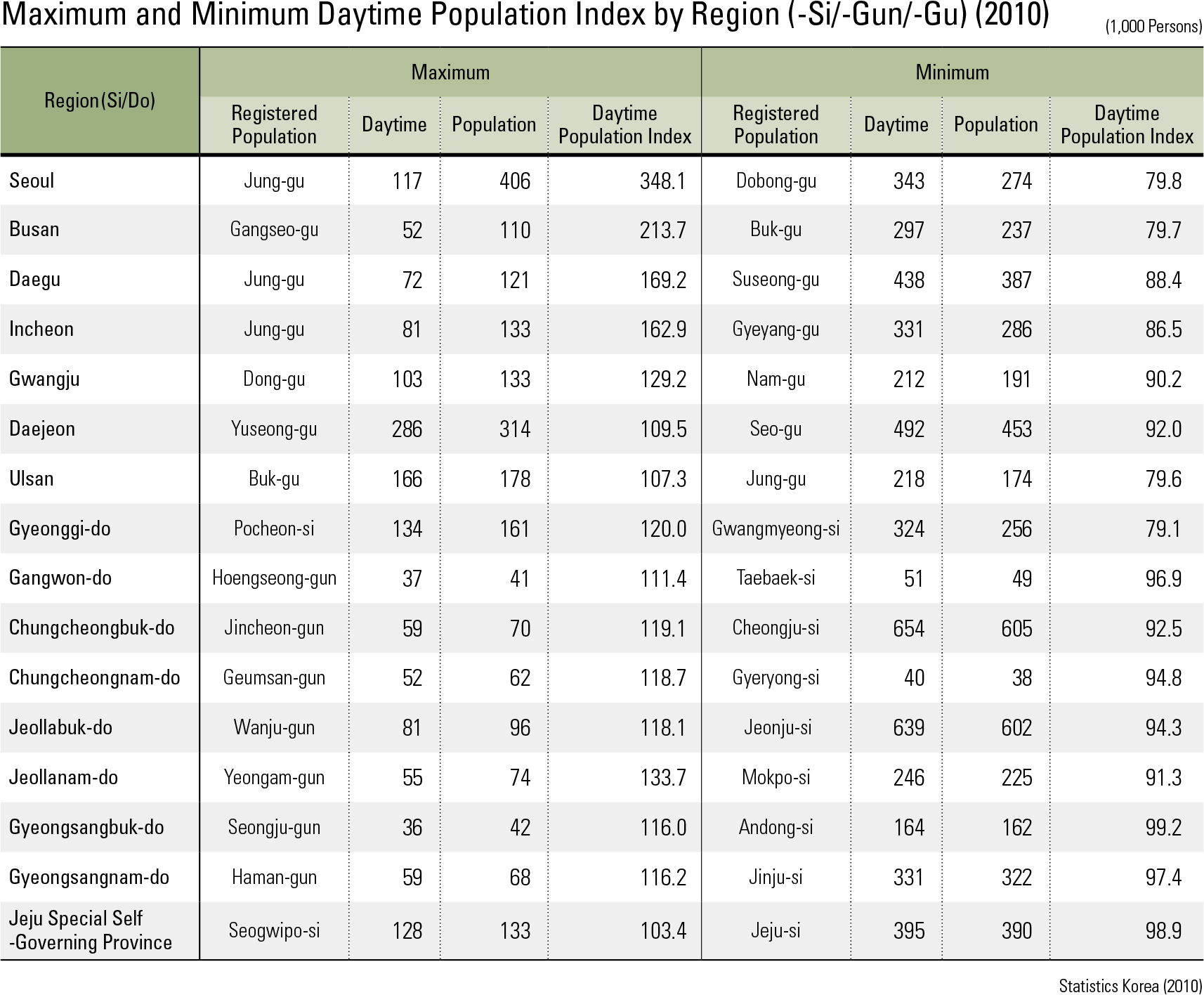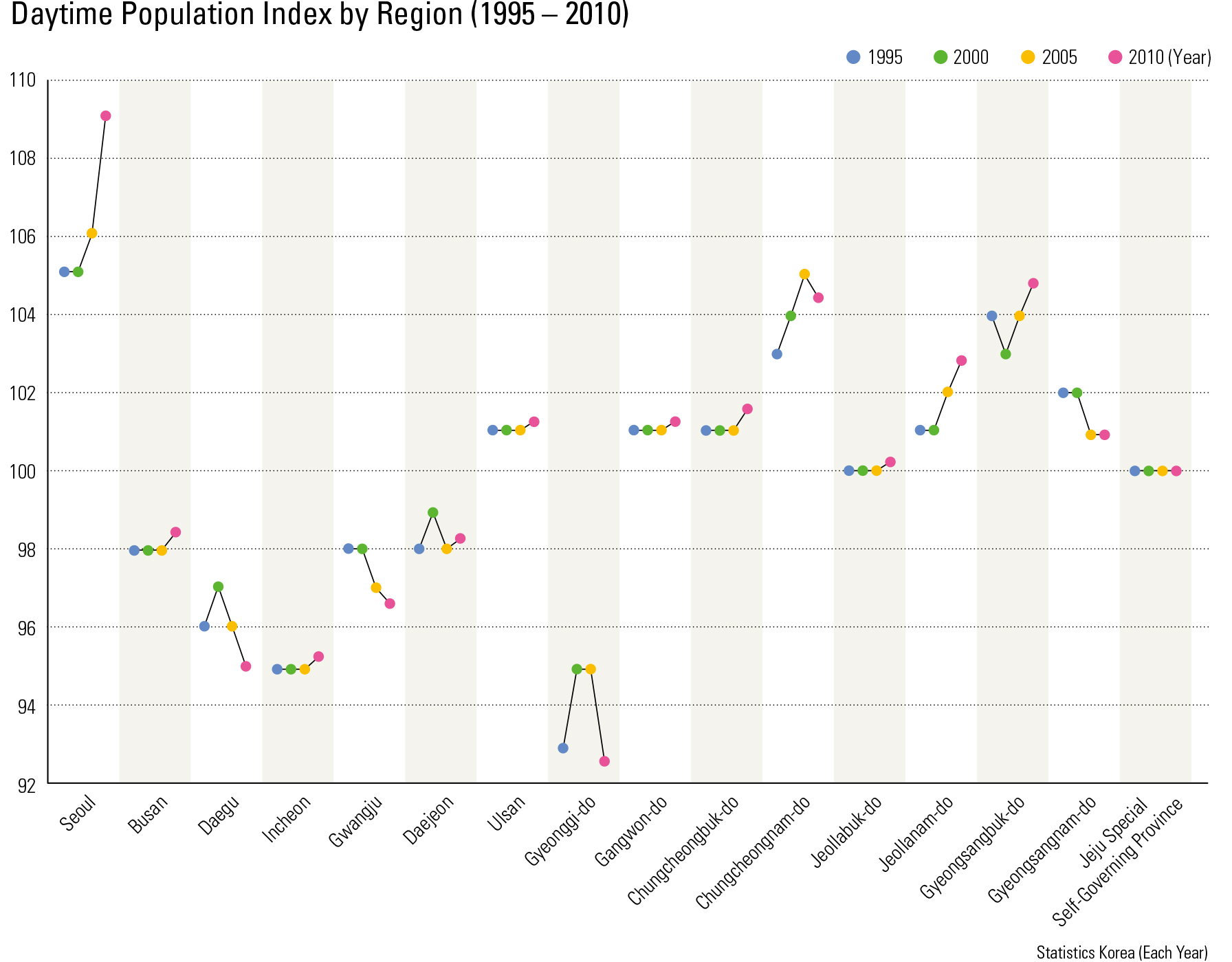English III
When the domestic migrations in 2010 were analyzed in relation to the birthplace of migrants, Seoul births accounted for the largest percentage at 15.9%, followed by Gyeonggi-do (12.2%) Gyeongsangbuk-do (9.5%), and Jeollanam-do (8.8%). Seoul and other metropolitan areas show that large proportions of their populations are in-migrants who were born in other places. The migration rate is defined as the sum of interregional (-si/-gun/-gu) migration and intra- regional (-si/-gun/-gu) migrants divided by the to- tal number of migrants. In the case of short-term migrations, there are more intraregional (-si/- gun/-gu/-do) migrations than interregional (-si/- gun/-gu/-do) migrations. Domestic migrations in Korea increased during the urbanization and industrialization periods in the 1970s and 1980s, but they have been decreasing since the 1990s due to the implementation of regionally balanc- ing development initiatives and the evolution of transportation systems.
page_2 |

